
Steinkopf
A small town in the Northern Cape on the road between Springbok and Namibia on the N7. Geo-position: 29.2616°S, 17.7331°E and 831m a.m.s.l. In the days of apartheid this was a coloured area.
It started with a station of the London Missionary Society in 1818 when the society sent out Heinrich Schmelen. That was at a place called Bijzondermeid, which was east of the present settlement. The mission station received the name Steinkopf, so 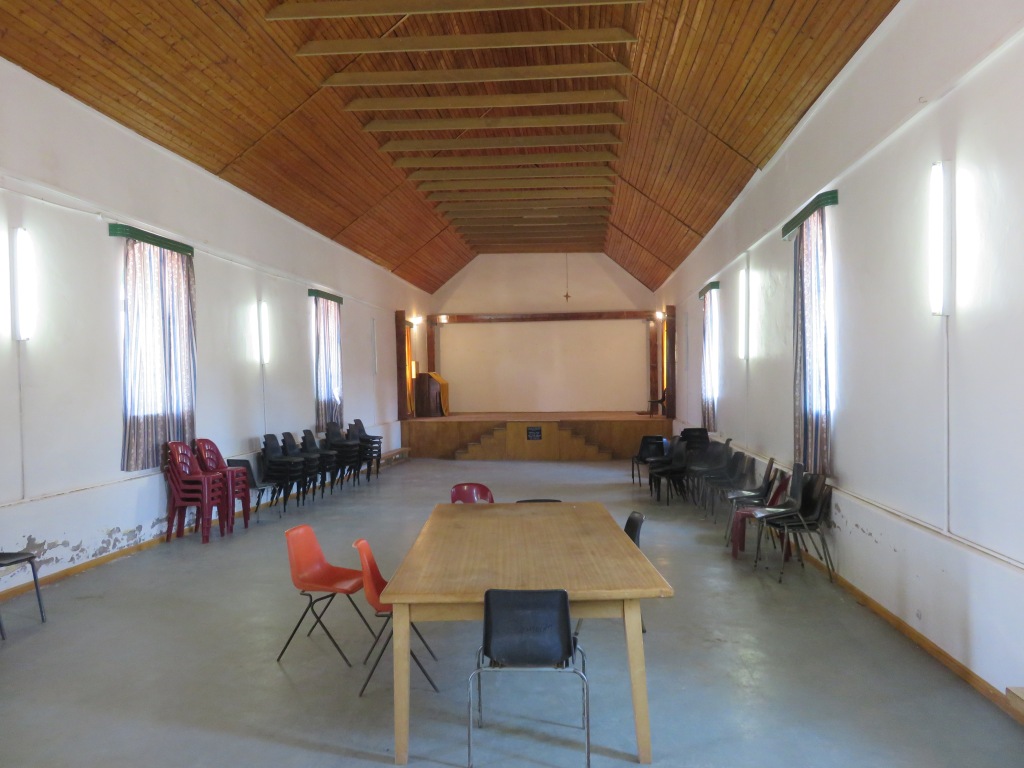 named after Dr.Karl Steinkopf, a minister in the German congregation in London at the time. He had made a substantial financial contribution to help establish the station. With time the inhabitants moved further east to settle near a place called Kookfontein (boiling or bubbling fountain). The mission station had to follow them, re-establishing in 1821.
named after Dr.Karl Steinkopf, a minister in the German congregation in London at the time. He had made a substantial financial contribution to help establish the station. With time the inhabitants moved further east to settle near a place called Kookfontein (boiling or bubbling fountain). The mission station had to follow them, re-establishing in 1821.
The station was transferred to the Rhenish Mission in 1840. It was in that decade that the church shown in the picture was build.
The association changed again when most of the Rhenish Mission stations were handed to the NG Sendings Kerk, the missionary arm of the Nederduits Gereformierte Kerk, in 1934.
the old church building
When I went to the office to ask for access to the inside of the church and in conversation I ask 'is this part of the sendings kerk?', I was informed in no uncertain terms, this is not the sendings kerk, this is the NG (Nederduits Gereformierte Kerk), we are all one now. The penny dropped in me, there has been a unification of the different arms of the NG family, so that there is now only one church. But back to the subject.
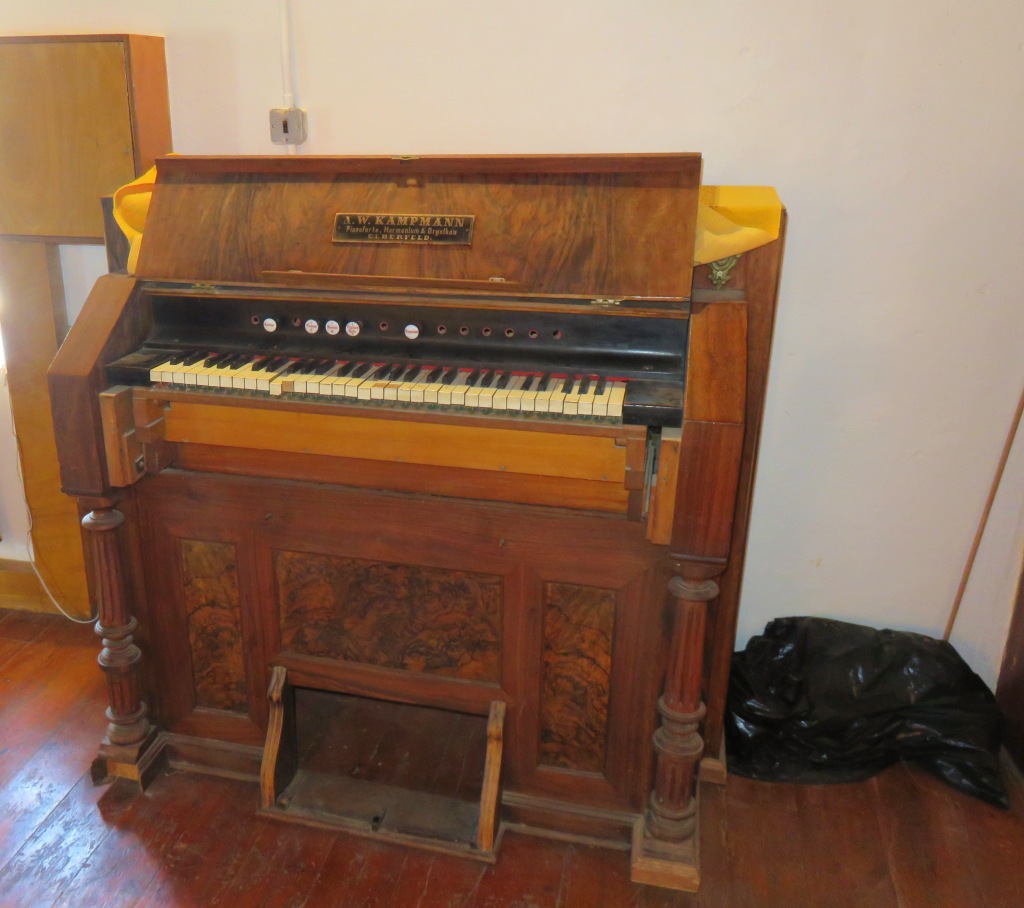 The exact date when it was built is not known, only that it was in the 1840th. It is mentioned that Ferdinand Brecher added school rooms and a house. Architecturally, of course, the church was nothing special, just fit for purpose, one big hall as seen in the picture. Nowadays, because a newer church was build, it is used as a hall. It has been declared a national monument.
The exact date when it was built is not known, only that it was in the 1840th. It is mentioned that Ferdinand Brecher added school rooms and a house. Architecturally, of course, the church was nothing special, just fit for purpose, one big hall as seen in the picture. Nowadays, because a newer church was build, it is used as a hall. It has been declared a national monument.
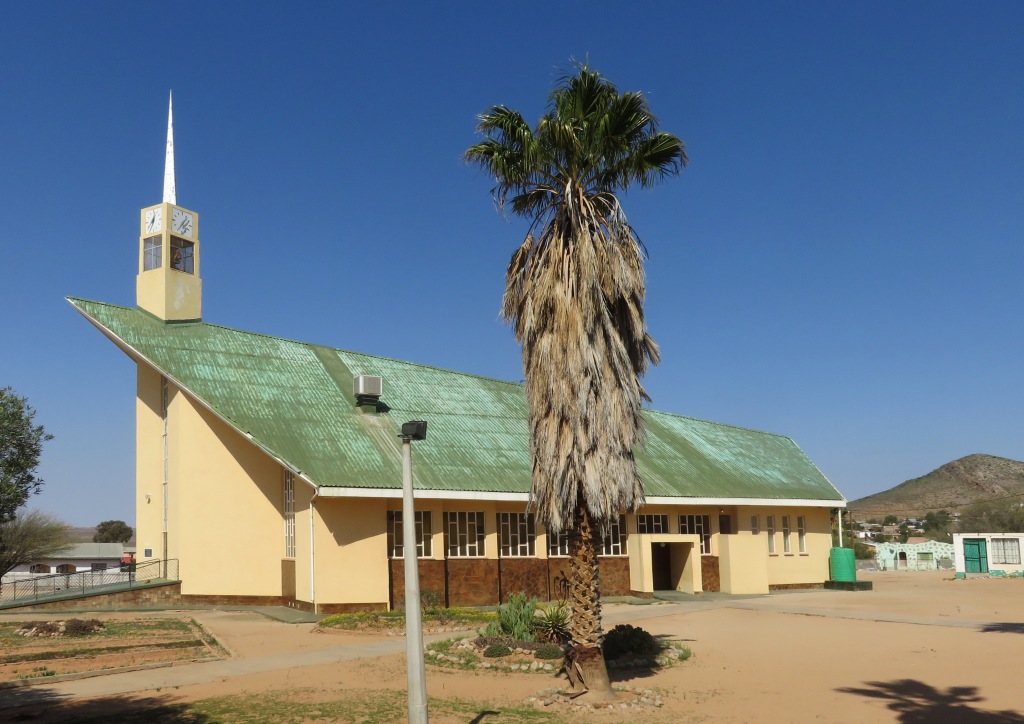 A gem found in the hall is an old harmonium (I think that is what it is). It is not in working order, the name plate states: A.W.Kampmann; Pianoforte, Harmonium & Orgelbau; Elberfeld. This is a connection to the Rhenish Mission, because Elberfeld is in Wuppertal, in the area where the Rhenish Mission Society had its beginning. The church would like to get it restored so that it can be used again, any harmonium fixers out there?
A gem found in the hall is an old harmonium (I think that is what it is). It is not in working order, the name plate states: A.W.Kampmann; Pianoforte, Harmonium & Orgelbau; Elberfeld. This is a connection to the Rhenish Mission, because Elberfeld is in Wuppertal, in the area where the Rhenish Mission Society had its beginning. The church would like to get it restored so that it can be used again, any harmonium fixers out there?
I have no information of when the newer church was build. The Facebook page 'Steinkopf Bronnesentrum' shows some time line pictures, the church was not there in 1930 and appeared on the next picture of 1960. Looking at the style I would think it was built in the 1950th.
Ferdinand Brecher
This name keeps on coming up all the time when looking at the history of Steinkopf. He was very influential in the area. Thus I like to share what I found on the Internet.
Ferdinand Brecher was born on the 21-3-1813 in Willingen, a small town or village about 100km east of Wuppertal. He trained as a missionary and was sent out to the Cape in 1834 to commence duty in Kommaggas. That is about 40km south-west of Springbok in the Northern Cape. From the Facebook page 'Steinkopf Bronnesentrum' there is a note that seems to indicate he started work in Steinkopf in 1852. In 1846 he got married to Ana Katharina Hanafey, the wedding ceremony was held in Stellenbosch. She died very young at the age of 29 in Steinkopf. Ferdinand re-married in 1855 to Maria Isabella Magdalena van Reenen. She was born in 1819 and died in Steinkopf on the 8-7-1901. Ferdinand stayed in Steinkopf until his death, 6 month after his wife, on the 18-1-1902.
Ferdinand Brecher school
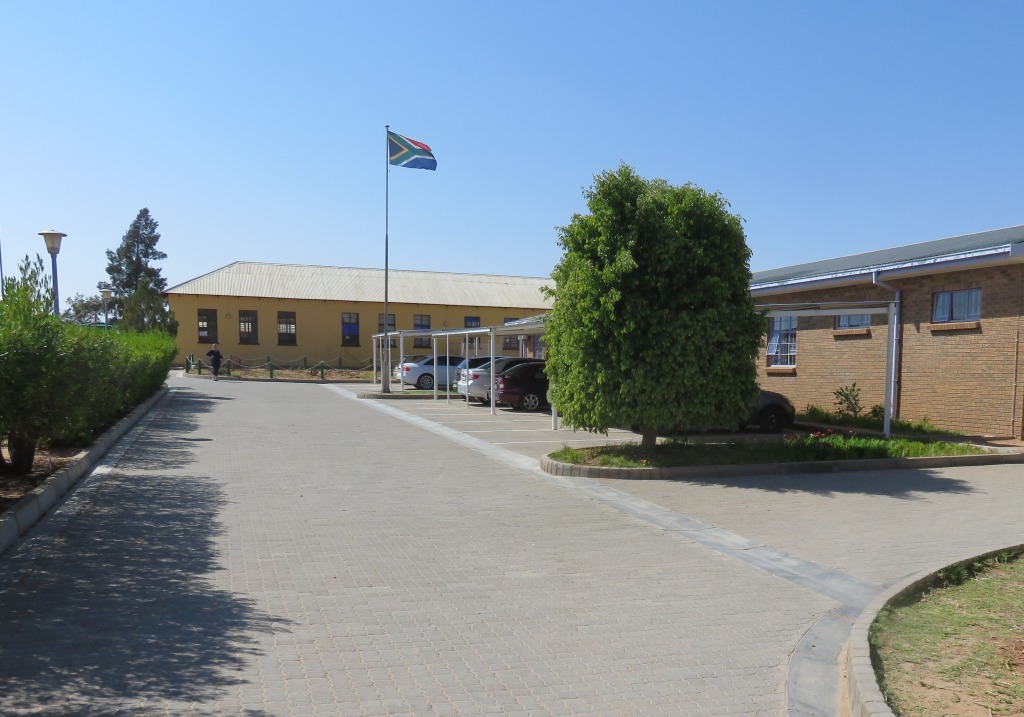
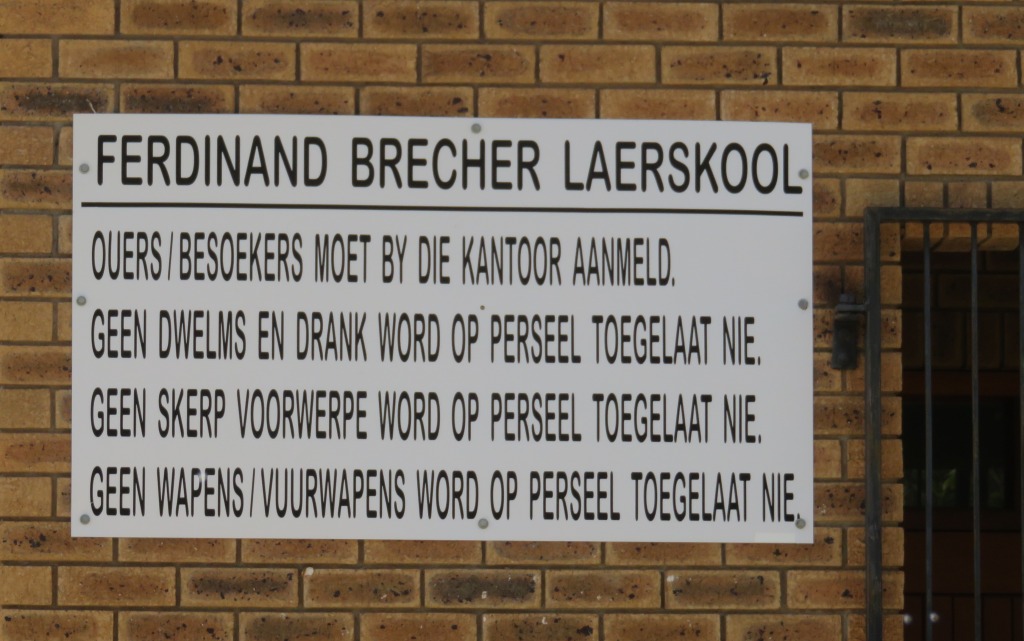 There are two schools, a primary and a secondary school, both carrying the name Ferdinand Brecher. What I saw at the primary school, I thought, was a bit disturbing. A sign, that I need to translate: Ferdinand Brecher Primary School; Parents and visitors must register at the office; no drugs or booze is allowed on the premises; no sharp objects allowed on the premises; no weapons/firearms allowed on the premises. Can the reader understand why I am disturbed? This is a primary school which pupils attend until they are 14.
There are two schools, a primary and a secondary school, both carrying the name Ferdinand Brecher. What I saw at the primary school, I thought, was a bit disturbing. A sign, that I need to translate: Ferdinand Brecher Primary School; Parents and visitors must register at the office; no drugs or booze is allowed on the premises; no sharp objects allowed on the premises; no weapons/firearms allowed on the premises. Can the reader understand why I am disturbed? This is a primary school which pupils attend until they are 14.
Searching the internet and books about the area made me realise that there are a few places that I have left out. Such as the fountain, which apparently is still bubbling, a railway station, the Copper train used to come through here, and there must be a cemetery where one possibly finds the last resting place of Ferdinand Brecher and his wifes Anna and Maria. I can't see myself in Steinkopf in the near future. Could somebody from the area help out here with pictures and a bit of a description.
References
Ref 1.: Standard Encyclopaedia of Southern Africa, Nasou Limited